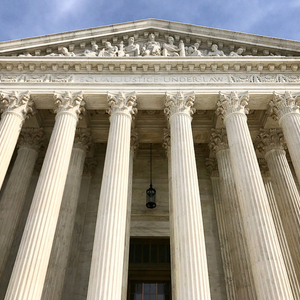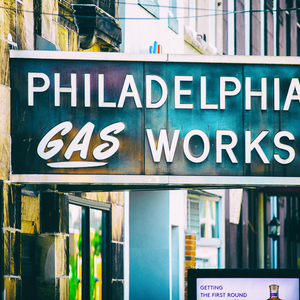A growing cast of U.S. cities are joining the ranks of the so-called “Ready for 100” club. This includes ongoing efforts to transition their grids to 100-percent renewable energy, retrofit all city buildings for zero carbon, and get citywide GHG emissions down to livable levels within a predetermined timeframe (2030, et al.). For densely populated urban centers, this is no small feat. Having the political capital and will to move such initiatives forward is an ironclad prerequisite, and in mid-size markets like Burlington, Vermont, and Aspen, Colorado, several benchmarks in this vein have already been met.
Strictly speaking—dire climate imperatives notwithstanding—there is no better time for state and municipal governments to move the needle on renewable energy production, building electrification, emissions reduction targets, and so forth. With so much federal money in the pipeline, clean energy investments are primed to pay for themselves.
Few cities, however, have dedicated offices and personnel whose sole job it is to carry out each program and incentive tied to those investments. One notable exception is Denver, Colorado.
A healthy climate future in the Mile High City
Denver’s Office of Climate Action, Sustainability, and Resiliency (CASR) has appointed a new executive director. Liz Babcock, who previously served as CASR’s deputy director, and was instrumental in creating the office more than three years ago, assumed the top post last fall. Her office’s mandate, according to Babcock, is to facilitate the city’s clean energy transition and ensure its GHG emissions reduction goals are met. “There’s such a huge opportunity to improve our building stock and improve quality of life through what we do with our buildings,” she says. “We’ve invested a lot of money in clean energy technologies, like community solar and geothermal. And we’re going to be doing a lot more with fleet electrification.”
The citywide goal is to reduce emissions by 65% by 2030 en route to a completely renewable grid. Right now, the largest source of renewable energy in the state is wind, and that growing infrastructure will have to play an outsized role in aiding Denver’s efforts to become 85% renewable-powered by 2030 as well.
Katrina Managan, CASR’s director of buildings and homes, stresses that “we have our own definition of net-zero energy [for new buildings and homes] that is highly efficient, all electric, powered by 100% renewable electricity, and provides on-demand response to the grid. Those are the four pillars we’re driving towards in our buildings. When we say ‘net-zero’ we don’t mean offsetting gas with renewables. And not all renewables have to be on site. But our grid will be 100% carbon free by 2050.”
Denver is the sixth fastest growing economy in the country, according to a 2022 report conducted by the Kenan Institute of Private Enterprise. This is driven largely by job growth in the software and financial services sectors, as well as an impressive track record of retaining native residents (an underrated but crucial metric of any successful regional economy). Relative to even other big cities that are taking decisive action (think San Francisco, San Diego, and Portland, OR), Denver is moving pretty aggressively towards its renewables and emissions goals. For starters, the city is making good on the state’s “Buy Clean Colorado” legislation, passed in 2021, which requires all future public construction projects—chiefly focused on roads and buildings—to meet embodied carbon reduction targets through the use of environmental product declarations (EPDs) and common materials with a low global warming potential. This campaign is also largely owed to the city’s comprehensive and holistic approach to housing.
Integrated approach to housing and sustainability
When Denver’s new mayor Mike Johnston took office last July, on Day 1 he declared a state of emergency relating to his city’s homelessness crisis. The stated goal is to find housing for 1000 unsheltered residents by the end of 2023. Whether that threshold is met, it’s worth noting this effort is neither an example of virtue signaling nor is it independent of Denver’s broader campaign to literally clean up its building stock.
Concurrent with that effort, the city is moving to phase out natural gas in all buildings, which currently accounts for 24% of Denver’s GHG emissions, according to CASR’s estimate. The city’s Net Zero Energy New Buildings and Homes Implementation Plan, released in early 2021, specifies that beginning with the adoption of its 2024 Building Code, all new homes will be all-electric and net zero energy. (This will eventually apply to all buildings starting with the 2027 code.) “We also have design incentives to help folks do these new all-electric [homes], and that’s in parallel with advancing our building code,” Managan says.
Both CASR and Xcel Energy, Colorado’s main electricity utility, have tiered, income-based rebate and tax incentive packages for installing heat pumps in homes, which is in addition to the city’s own incentive programs for introducing heat pumps, solar batteries, and electrical panel upgrades to existing single-family homes. Further, owners of existing multifamily and commercial buildings are required to, at minimum, conduct an Electrification Feasibility Report (or similar) to comply with the city’s building and fire code. While the latter may seem like an extra bit of red tape in the effort to swap out gas-fired equipment in large building stock, such reports can provide an effective guidebook for building owners who might otherwise be unaware of (or disinclined to pursue) cost models, available tax credits, or how to estimate energy and carbon savings relative to upfront expenditures.
Funding climate action
When it comes to tackling any crisis, whether related to social equity and housing affordability, environmental and economic resiliency, climate adaptation and electrification, or some combination thereof, even the very best of our cities are still treading water, for the most part. What’s happening in Denver, however, has been slowly unfolding for a few years. This suggests that the city’s civic and elected leaders have adopted a sober and pragmatic approach to paying for their political will to come to bear.
Prior to the Office of Climate Action, Sustainability, and Resiliency being established, Denver’s City Hall formed a Climate Action Task Force, which was led by Babcock. This team of 12 individuals was tasked with, among other things, working with Denverites to identify goals, solutions, and investment opportunities, and to “address climate change equitably.” Once their preliminary work concluded, in the spring of 2020, the new CASR office emerged. Interestingly, the funding to support such a department and its efforts was not yet in place.
Then in November of that year, voters in the City of Denver approved a sales tax increase of 0.25% to create the city’s Climate Protection Fund. The fund raises $40 million annually, more than half of which is directed at facilitating energy transition efforts for under-resourced and low-income communities.
Despite the will of the voters and a City Hall intent on seeing this energy transition through, Babcock concedes that “some local entities,” like developers and non-profit organizations, might “not have the tax appetite” for such change. In those instances, she highlights a provision in the Inflation Reduction Act where certain clean energy investments qualify for direct payments from the U.S. Treasury. “We estimate we might get $20 million back from the Treasury [Department] for investments that we’ve made. It’s really exciting to see this all come to fruition, because once we get those dollars in the door, we can then reinvest into more clean energy projects, and those projects can benefit our lowest income families.”
________________________________________________________________________
Justin R. Wolf is a Maine-based writer who covers green building trends and energy policy.
Weekly Newsletter
Get building science and energy efficiency advice, plus special offers, in your inbox.
















0 Comments
Log in or create an account to post a comment.
Sign up Log in